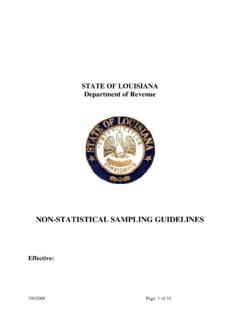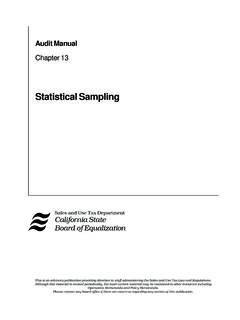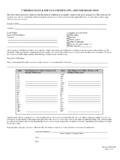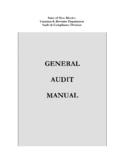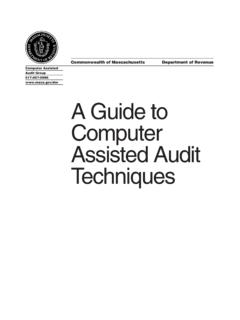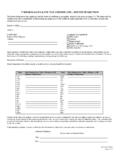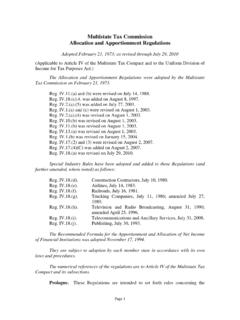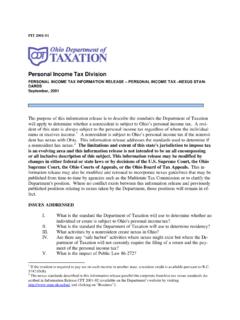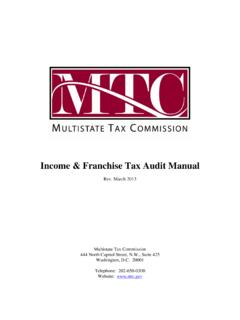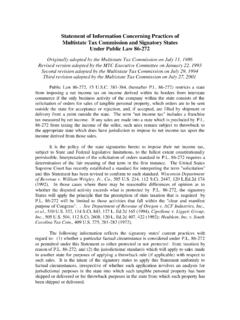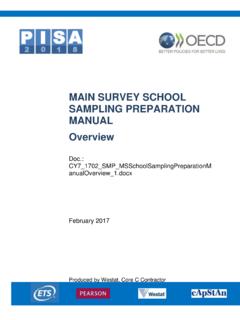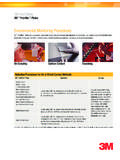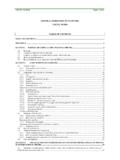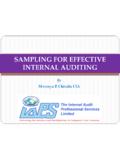Transcription of MANUAL AUDIT SAMPLING - Multistate Tax …
1 Page 1 of 15 MANUAL AUDIT SAMPLING SAMPLING is the application of an AUDIT procedure to less than 100% of the items within an account balance or class of transactions for the purpose of evaluating some characteristic of all the items within the balance or class of transactions. Much of the information included in this MANUAL was taken from the Statement on Auditing Standards No. 39 on AUDIT SAMPLING which provides guidance on the use of SAMPLING in an AUDIT of financial statements. This information has been adapted to fit the circumstances most often encountered in tax auditing. HISTORY The Department has used SAMPLING in its AUDIT procedures for many years.
2 That SAMPLING , for the most part, has been block SAMPLING . That is, taking a period of time and testing 100% of the records during that time. Until 1990, the Department's policy on SAMPLING was to take 100% samples from three test months per year selected for being the high, low and average months of the year. From 1990 forward the Department has adopted other systematic or random SAMPLING techniques. Random SAMPLING techniques are both convenient and accurate when performed properly, for these reasons SAMPLING is the rule rather than the exception in most audits performed by the Department.
3 The convenience and accuracy extends to taxpayers as well. Audits based on SAMPLING have been challenged. When challenged we have allowed the taxpayer to present detailed information to refute the results of the sample. PURPOSE OF AUDIT SAMPLING SAMPLING is performed because it is more efficient than testing 100% of a population. In tax audits, if the taxpayer and the Department can agree on a representative sample, it can save both parties time and money. By definition, any procedure that does not examine 100% of the items in question is a SAMPLING procedure. WHEN NOT TO SAMPLE There are many AUDIT procedures which do not involve SAMPLING .
4 Inquiry and Observation: Reviewing records for the method of accounting and other information. Observing accounting procedures. Discussing methods of accounting and reporting with taxpayer. Scanning documents for possible issues. Analytical Review Procedures: Comparing records reports and other information. Recomputing or estimating amounts. Reviewing trends in reporting. Comparing similar businesses. One-Hundred Percent Examination: Reviewing all fixed asset purchases, where appropriate. Examining all contracts, where there are a small number. Reconciling each years gross receipts to CIT A sales factors or Schedule C receipts.
5 Zero Percent Examination: Page 2 of 15 This occurs when the auditor determines that a type of receipt, deduction, exemption or other item does not need to be tested. Note: Even though 100% examination may be done where appropriate. It is not mandatory for any particular taxpayers or tax programs. SAMPLING procedures discussed below may be more cost effective. SAMPLING RISK Overall tax AUDIT risk is made up of the risk of inaccurate records and the risk of misapplication of the tax law. Both of these risks are made up of two components as well. 1. Risk that there are errors (inherent risk). 2. Risk that procedures will not find errors ( AUDIT risk).
6 AUDIT risk, in turn is made up of two components, the risk that a procedure is not effective and SAMPLING risk. SAMPLING risk is the probability that the sample results are not representative of the entire population. In general, factors that may lessen SAMPLING risk include: 1. Taking larger size samples 2. Using random sample selection methods 3. Stratifying the sample 4. Properly defining the test objective 5. Properly defining a deviation 6. Exclusion of non-recurring, non-systematic errors. 7. Properly evaluating errors. STATISTICAL VS. NON-STATISTICAL SAMPLING The difference between statistical and non-statistical SAMPLING is that statistical SAMPLING allows the user to measure the SAMPLING risk associated with the procedure.
7 Statistical SAMPLING applies the laws of probability to determine the percent likelihood that the sample does not accurately reflect the population. In essence, the laws of probability say that large, relatively homogeneous populations have similar distributions and other features so that if a random sample is taken, it will consistently reflect the population within certain limits. In order for the sample to be a statistical" sample, the results must be evaluated and two calculations made. These calculations tell the user how likely it is that the sample results are within a given range of the actual population.
8 For instance, a statistical sample would not only tell you that disallowed deductions are estimated at $5,000, but that you have a 95% likelihood (confidence) of being within $50 (precision) of the actual disallowed deductions. A properly designed and applied non-statistical sample can provide results that are accurate and effective, but will not measure the SAMPLING risk. Generally, the decision to apply a statistical or non-statistical SAMPLING application to a particular AUDIT test is a matter of cost effectiveness. Statistical applications usually require more training for auditors and more time to apply.
9 The department utilizes non-statistical random SAMPLING procedures. Many AUDIT programs in both the public and private sector have developed standard SAMPLING approaches which use predetermined allowances for acceptable SAMPLING risk, expected and tolerable error. These approaches reduce the time and effort required to determine the sample size and evaluate results. The cost of these approaches is that they usually generate sample sizes somewhat larger than necessary to allow a margin for variance. The New Mexico Taxation and Revenue Department has elected to use fixed sample sizes of 250 and 500 items of interest for variable SAMPLING .
10 The sample sizes apply to homogeneous and non- Page 3 of 15 homogeneous populations respectively. Stratification of a population can reduce sample size in most cases. Provisions for SAMPLING units based on time periods is also provided. In any SAMPLING approach, the auditor must evaluate the population that is being tested, must determine if any stratification should be done, must evaluate the cause of any exceptions and must apply the results from the sample to the remaining portion of the population. DESIGNING A SAMPLING APPLICATION There are several steps in designing a SAMPLING application for an AUDIT or investigation.
